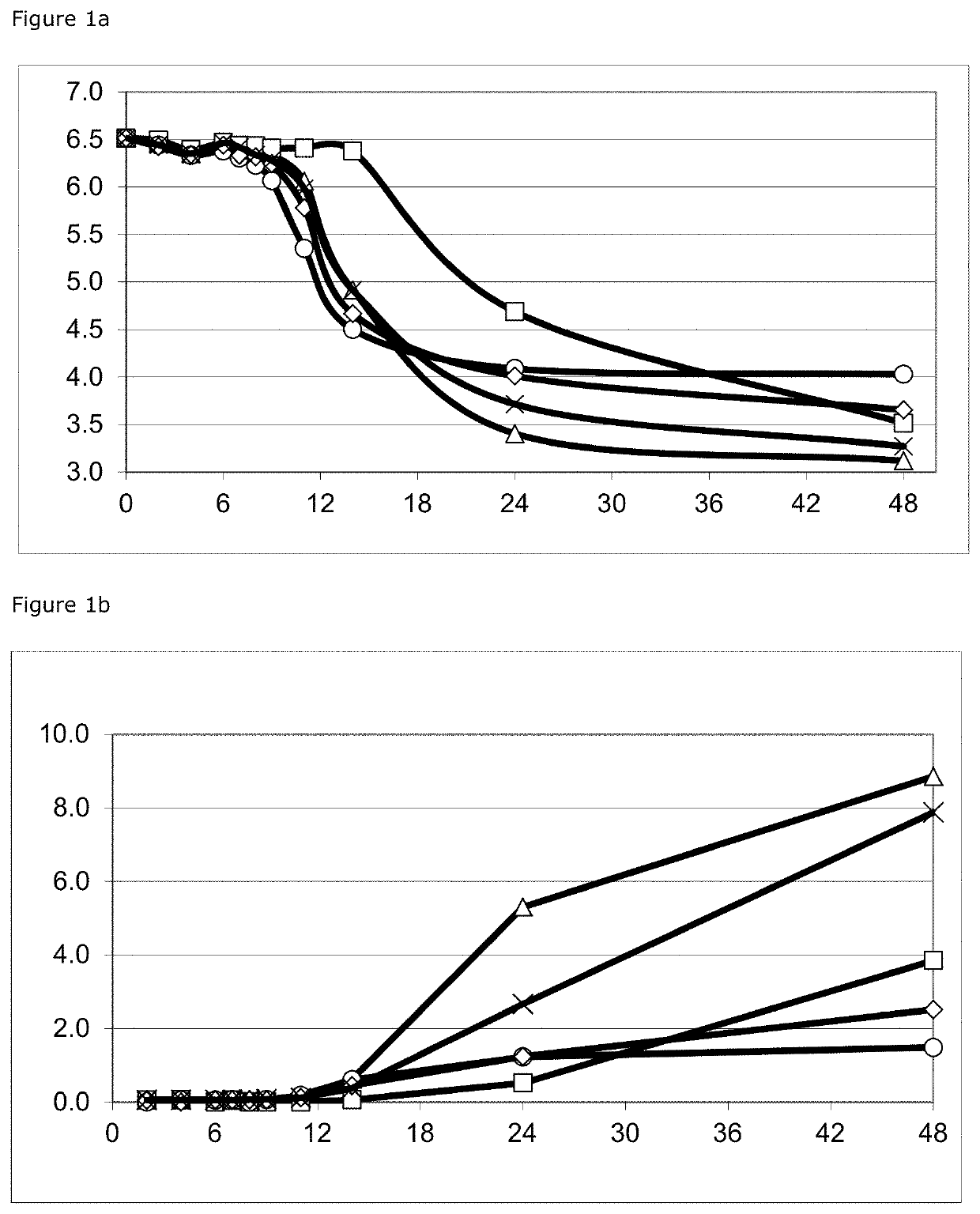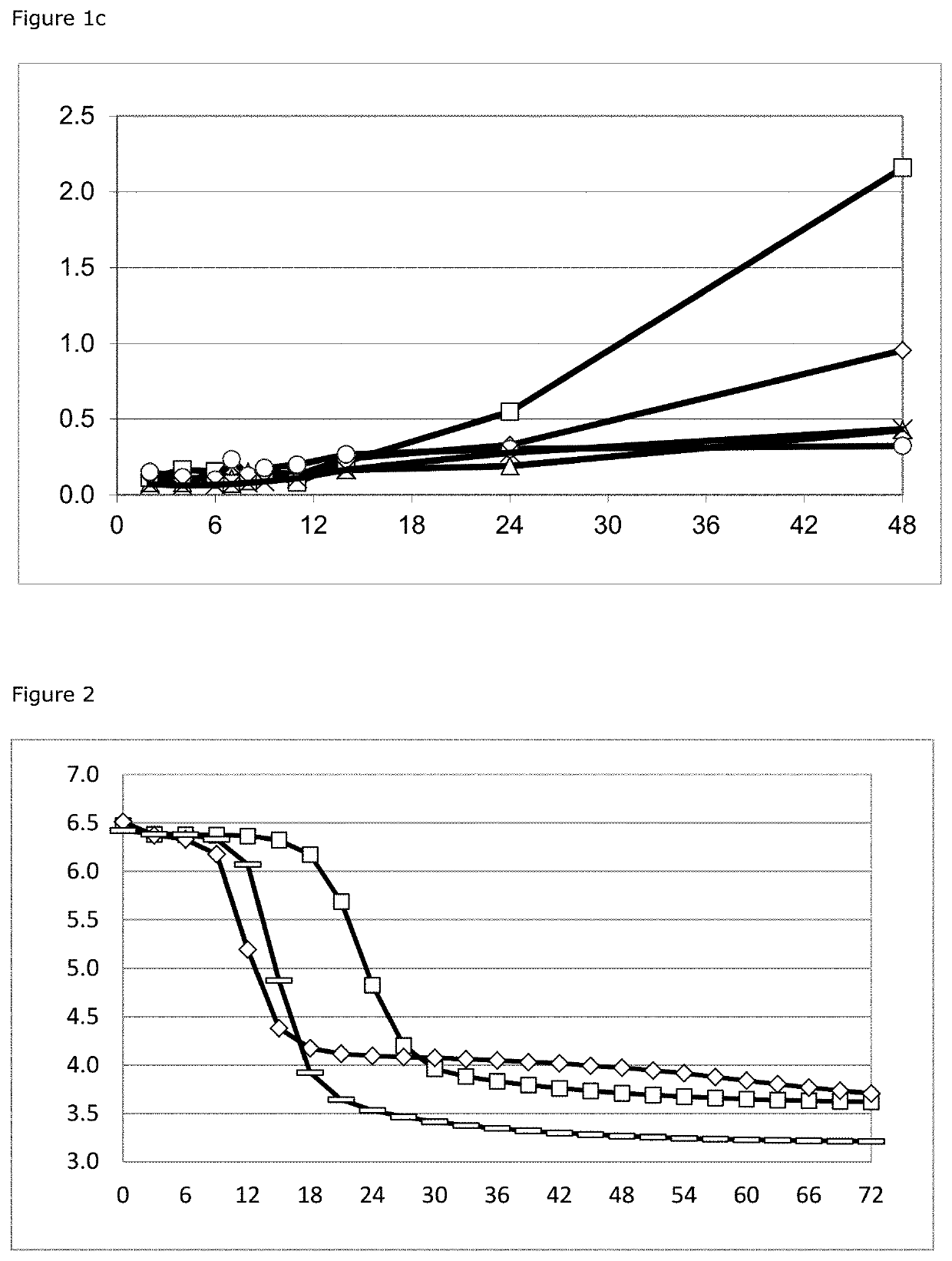Compositions of hetero- and homofermentative lactic acid bacterial species for dual purpose silage preservation
a technology of inoculant composition, which is applied in the field of compositions of heterofermentative lactic acid bacterial species for dual purpose silage preservation, can solve the problems of loss of a great amount of nutrients, temperature increase, and outgrowth of any aerobic spoilage strain present in the silage, and achieve the effect of improving the composition of bacterial inoculan
- Summary
- Abstract
- Description
- Claims
- Application Information
AI Technical Summary
Benefits of technology
Problems solved by technology
Method used
Image
Examples
example 1
Sterile In Vitro Batch Cultures
[0076]Single strains of homofermentative and heterofermentative lactic acid bacteria and combination products were tested in two independent experimental setups using a sterile silage medium containing various different carbohydrate sources to simulate the carbohydrate composition of grass. The pH and organic acid content were measured over time. The medium contained 5 g / L Yeast extract (Oxoid L21), 5 g / L Peptone soya neutralized (Oxoid LP0044C), 0.8 g / L soluble starch (Merck 1252), 0.08 g / L Manganese(II) sulfate dihydrate (Sigma M-1114), 0.037 g / L Succinic acid (assay lab), 0.069 g / L Citric acid monohydrate and 0.14 L-Malic acid (Merck 244) which was mixed in 900 mL Milli Q water until dissolved. The pH was adjusted to 6.3 and distributed to baby bottles and autoclaved at 121° C. for 15 minutes. After autoclaving 100 ml of sterile filtered sugar solution containing 56 g / L D(−) fructose (Merck 4007), 32 g / L D(+) glucose monohydrate (Merck 8342), 20 g / L...
example 2
Aerobic Stability in Mini-Silos
[0090]Mino-Silos 1, 2, and 3—Maize Harvest 2011, 2012, and 2013, Denmark
[0091]Five different mini-silo experiments were set up to test various different silage inoculant compositions. Three experiments were set up in Denmark with maize harvested from three different farms in 2011 (Mini-silo 1), 2012 (Mini-silo 2) and 2013 (Mini-silo 3) and two experiments were conducted in Lithuania in 2013 using maize and red clover:timothy:fescue sward (60:30:10) (Mini-silos 4 and 5). An overview of the inoculants used and the application rates are listed in Table 3.
[0092]
TABLE 3Strain compositions used in the mini-silo studiesCompositionMini siloCFU / gNo.No.ForageBacterial strainsPercentageforageNo additive1, 2, 3, 4,Maize06, 7a, 7b5Grass / Clover23, 4MaizeL. buchneri DSM 22501100150,0005Grass / Clover41, 2, 3, 4,MaizeL. buchneri DSM 2250150150,0006, 7a, 7b5Grass / CloverL. lactis DSM 110375052MaizeL. buchneri DSM 2250170150,000L. lactis DSM 1103720L. plantarum DSM 1656810...
PUM
 Login to View More
Login to View More Abstract
Description
Claims
Application Information
 Login to View More
Login to View More - R&D
- Intellectual Property
- Life Sciences
- Materials
- Tech Scout
- Unparalleled Data Quality
- Higher Quality Content
- 60% Fewer Hallucinations
Browse by: Latest US Patents, China's latest patents, Technical Efficacy Thesaurus, Application Domain, Technology Topic, Popular Technical Reports.
© 2025 PatSnap. All rights reserved.Legal|Privacy policy|Modern Slavery Act Transparency Statement|Sitemap|About US| Contact US: help@patsnap.com



